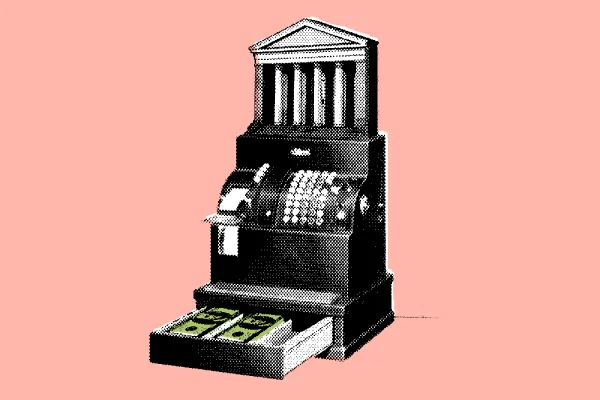Click here to see the ranking.
The bond market continues to confound. Nearly three quarters of the way through 2005, the yield on the benchmark ten-year Treasury bond sat below the 4.25 percent level of January, well under the 5 percent that market watchers had anticipated at the start of the year. This despite ten successive quarter-point rate hikes by the Federal Reserve Board since June 2004 -- the most recent being early last month -- that have boosted the all-important federal funds rate on interbank loans to 3.50 percent as of mid-August. The persistence of low long-term yields in the face of interest rate hikes, credit market shocks and mounting signs of inflationary pressure has perplexed nearly everyone, from economists to central bankers to retirees clipping coupons in Florida. The Bank for International Settlements, in its annual report released in June, called the phenomenon "particularly puzzling."
Explanations vary. Some see a flight to quality brought on by market uncertainty, whereas others believe that the yawning U.S. trade imbalance has created strong foreign demand for Treasuries. "What we call a U.S. problem is just as much a Japanese problem because they have nowhere to keep their money," says Ravi Mattu, global head of fixed-income research at Lehman Brothers. Pessimists contend that low long-term rates signal excess capacity and an economy that is weaker than perceived and headed for trouble.
To sort through this puzzle, investors turn to Wall Street's fixed-income research analysts. For a sixth consecutive year, Lehman Brothers ranks No. 1 in Institutional Investor's All-America Fixed-Income Research Team. (The firm is the reigning winner in equity research as well.) In all, Lehman garners 39 total team positions, edging out repeating-second-place J.P. Morgan, which wins 38 positions, one more than last year. Credit Suisse First Boston holds steady in third place, although it loses three team spots, for a total of 28. UBS moves up a position to fourth, followed by Bear, Stearns & Co., which ranked sixth last year. Among the biggest movers: Banc of America Securities, which jumps from tenth to seventh place, tying with Citigroup, which falls from fourth in 2004.
This year's survey, our 14th, covers 62 categories. We have added a new category in the Structured Securities area, MBS/Adjustable-Rate Mortgages, as well as a separate investment-grade category for Autos & Auto Parts (previously included in Manufacturing). We have eliminated the Investment-Grade Transportation category, which covered mostly airlines; these now are chiefly in the High-Yield Transportation category.
Rates and yields are not the only areas of the bond market that have deviated from expectations. After indicating in conference calls and written materials that downgrades of Ford Motor Co. and General Motors Corp. were unlikely until the second half of the year, Standard & Poor's lowered the auto giants to junk status in May. The move, which affected more than $450 billion in bonds, caused spreads to widen and brought the primary market to a temporary halt. Market participants feared that bond owners dumping Ford and GM for other investment-grade securities would suffer losses. Conversely, they worried that high-yield investors would be forced to sell off large portions of their holdings to make room for the auto debt.
"None of us was sure how great the high-yield appetite would be for Ford and GM paper," says Brian Jacoby, who finishes first in the Investment-Grade Autos & Auto Parts sector and who joined Goldman, Sachs & Co. in July from Morgan Stanley.
Additionally, rumors made the rounds that some hedge funds, which had made substantial bets in the stock and bond markets expecting that S&P would hold off on its downgrades, were in trouble. But -- while GM and Ford bond spreads widened, Treasuries strengthened on flight-to-quality purchases and one or two hedge funds closed -- there was no general crisis. That the market absorbed the automaker downgrades fairly easily demonstrates how far the credit derivatives market -- which had anticipated the bad news and priced it into credit default swaps -- has come. Two years ago, notes one research chief, "most of the real-money guys wouldn't have known a credit default swap if it fell over them, but that's not the case today." Credit derivatives have become so important, say analysts, that five-year default-protection levels, rather than cash bond spreads, have become the basis for comparing securities.
"Credit default swap spreads are a purer relationship," says Chester Luy, director and senior manufacturing analyst at Barclays Capital, who is the first-team winner in Investment-Grade Manufacturing and No. 2 in Autos & Auto Parts. Spreads on the standard five-year credit default swaps referenced to GM started the year in the mid-300-basis-points range. They rose to nearly 900 basis points in late April and ballooned to a high of 1,062 basis points in the days and weeks after the downgrade. By late August they were at 610.
Covering the more complex fixed-income markets requires a different structure and approach. Lehman and Bear Stearns, to name two firms, have combined their respective high-grade and high-yield research teams. UBS has opted for another approach, combining its bond, currency and rates research businesses, partly for easier regulatory monitoring and partly to deliver a broader range of research. "We are putting out more pieces involving cooperation across the fixed-income research areas, something we didn't do before," says Laurie Goodman, co-head of the firm's fixed-income research, head of its mortgage-backed-securities research effort and leader of first-place teams in four MBS categories. She points to a 36-page report released in January that discusses the impact of foreign capital flows on the rates and credit markets as indicative of the kind of collaborative work the new group is producing. "If you are a mortgage investor, you want to understand what's going on in foreign flows, not only in the mortgage market but also in Treasury, agency and corporate markets," she says.
At J.P. Morgan, Margaret Cannella, head of corporate research for the Americas and No. 3 in Investment-Grade Retailing, says analysts cover "not just bonds, but everything in the capital structure on the credit side." Her firm, like Deutsche Bank, has yoked its corporate fixed-income and equity research departments. Cannella says the new structure, which was put in place at the end of the first quarter, enables analysts to collaborate and help each other. Voicing a contrary opinion, Daniel Spina, head of fixed-income research at Bear Stearns, believes that stocks and bonds remain different animals and that "you need analysts who can create actionable responses for each market."
Another impetus for structural change has been the Bond Market Association's research guidelines, which were released in May 2004 with the goal of promoting the independence of fixed-income research. In the wake of the guidelines' issuance, firms have physically separated traders and researchers, established desk analyst teams and required analysts to certify that their work is a reflection of their own beliefs. But when II asked buy-side survey participants whether the guidelines have changed the quality of sell-side research, their responses revealed ambivalence. Half said they didn't know if research quality had improved, and the rest were evenly divided among those who thought the guidelines have had a positive impact on research and those who thought they haven't. -- Scott Goodwin
The ranking was compiled by II under the direction of Director of Research Operations Group Sathya Rajavelu, Assistant Managing Editor for Research Evan Cooper, Assistant Managing Editor for Technology and Development Lewis Knox and Senior Editor Jane B. Kenney, with Associate Editor Donovan Hervig.





